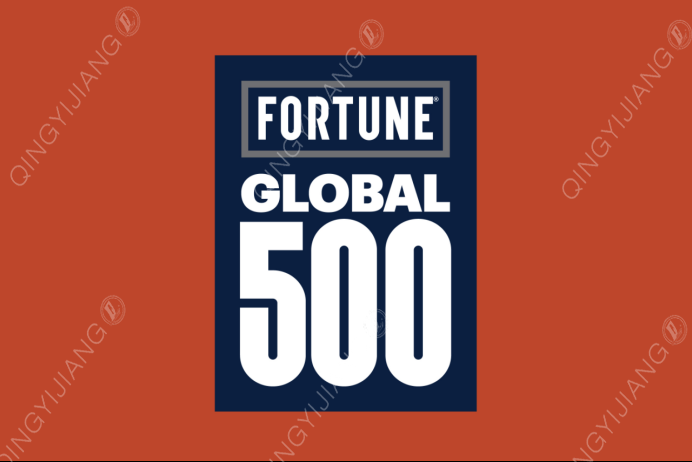2025 Global Sodium Sulfate Demand Map: Industrial Signals from the Fortune Global 500
QYJSSA/October 25,2025
Key Highlights
l List direction: Among the companies on the 2025 Fortune Global 500, ten major users across household chemicals, specialty chemicals, glass, textiles and resource-recovery sectors were identified as significant consumers of sodium sulfate decahydrate.
l Core consumption: Eight companies together account for roughly 40% of global sodium sulfate output, with combined annual demand exceeding 5 million tonnes.
l Application profile: Three demand poles are emerging — steady growth in household detergents, expansion in high-purity chemical applications, and stable cyclical demand from industrial systems — forming an initial tri-polar demand structure.
l Growth drivers: Battery materials, green manufacturing and circular recovery systems are driving sodium sulfate from a traditional inorganic salt toward higher value-added uses.
l Implication for Chinese producers: For China’s sodium sulfate manufacturers, understanding the material composition and procurement rhythms of leading end users will determine future supply-chain pricing and technology direction.

Figure 1: Fortune Global 500 (2025)
Household-care Titans: Rigid demand in the global detergents market
Procter & Gamble (P&G, ranked #120)
A global leader in household chemicals. In its powdered laundry detergents, bar soaps and home-care powders, sodium sulfate (sodium sulfate decahydrate) constitutes over 70% of inorganic salt usage, functioning as a bulking agent and solubility aid. Annual demand is approximately 2.5 million tonnes.
Representative brands: Tide, Ariel, Gain.
Unilever (ranked #156)
The world’s second largest detergent group. Powder detergents produced in European and Southeast Asian plants use sodium sulfate as a carrier salt and drying aid. Annual consumption is about 1.5 million tonnes.
Representative brands: OMO, Surf, Comfort.
Midea Group (ranked #288)
An appliance giant extending into cleaning-product ecosystems. Sodium sulfate is used to stabilize formulations for dishwasher powders and drum-washer specialty detergents. Annual demand is around 100,000 tonnes, with growth of ~15%.
Chemical Materials: High-purity demand driven by technology
Bayer Group (ranked #233)
A German fine-chemical leader. Sodium sulfate plays roles in crystallization control and as a drying agent in pharmaceutical intermediates and agrochemical reaction systems . Annual procurement is ~700,000 tonnes.
LG Chem (ranked #184)
South Korea’s largest diversified chemical company. High-purity sodium sulfate is used as a dehydrating agent in battery electrolytes, PVC, ABS and engineering-plastic systems. Annual consumption is about 1.0 million tonnes, ranking first in the Asian chemical sector.
Industrial Manufacturing: Stable base from traditional sectors
Saint-Gobain (ranked #211)
A global leader in glass and high-performance materials. Sodium sulfate is extensively used as a fluxing aid in float glass production and in glass-clearing stages for energy-efficient glass. Annual usage is approximately 900,000 tonnes.
Shandong Weiqiao Pioneering Group (ranked #343)
One of the world’s largest cotton textile manufacturers. Sodium sulfate is widely applied in dyeing, desizing and printing-washing processes. Annual demand is about 600,000 tonnes. Its long-term contracts function as a domestic price benchmark.
Resource Recovery and Green Utilization
Veolia Environnement (ranked #404)
A global leader in water services and resource recovery. In industrial desalination and waste-liquid crystallization systems, sodium sulfate is used for sodium-ion balance and crystallization reuse . Annual processed and reused volumes reach about 500,000 tonnes.
Representative projects: European industrial-park waste-liquid salt recovery; desalination plant recycling systems in Abu Dhabi.
Industry Outlook
As of 2025, global sodium sulfate consumption is estimated at ~13 million tonnes/year. Household detergent manufacturers provide steady, rigid demand; specialty chemical systems supply growth momentum; industrial manufacturing and recycling ensure base stability.
Over the next five years, driven by upgrades in green manufacturing and circular-use policies, sodium sulfate’s value chain is likely to shift from a single-product commodity model to a system-level raw-material and recycling network. For upstream producers, true competitiveness will no longer be measured solely by per-ton pricing but by which suppliers can secure early inclusion on global industrial supply lists and offer integrated, reliable supply and recycling solutions.
